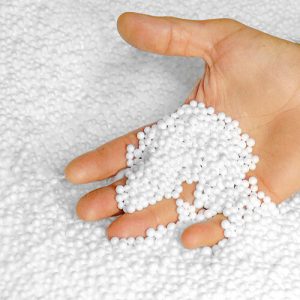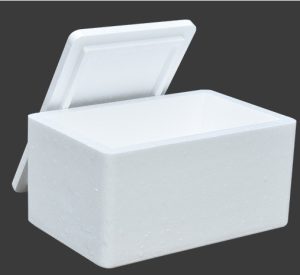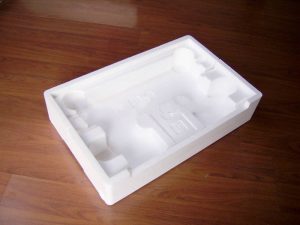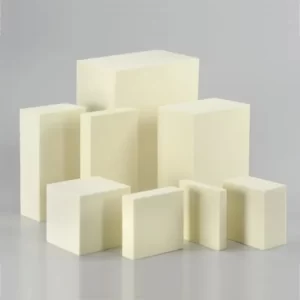Polystyrene is an industrial material which is widely used for the purpose of installation and packaging. Most importantly, the principle of low thermal conductivity makes polystyrene a valuable material that helps with heat resistance for applications.
Before we dive into the functionality of Polystyrene Insulation Productions, let us talk about…
What is Polystyrene?
Polystyrene or poly-phenylethene is a form of thermoplastic used in equipments and housing purposes. Polystyrene, as the name suggests, is made of molecules called styrene.
What sets polystyrene from other forms of plastic, is its improvised form which helps with heat resistance. Just look at the knobs and panels of your car, the material is made up of Polystyrene and the build is quite rigid and strong by nature.
Polystyrene is proven to be effective on a long term basis because any form of material that accumulates electrical charge easily helps with protecting objects from being crushed or broken.
Polystyrene can exist in variant forms as per its usability.
Solid form: Useful for disposable items like containers or cases. We know that polystyrene is rigid and transparent in form.
Expanded (Foam) Polystyrene (EPS): Most commonly used for packaging as it contains small contained cells with air. You can often find this in food based containers or trays in takeaways.
We are aware that polystyrene can be used in different forms but the real question here is
Polystyrene Thermal Resistance Capacity
Speaking of Polystyrene as a thermal shield, it acts as a rigid barrier that helps with healing resistance. Remember that thermal conductivity measures a material’s ability to produce heat , therefore the material of Polystyrene has low thermal conductivity.
The low thermal conductivity of Polystyrene ranges 0.033 to 0.04 W/m·K, making it an effective choice for the production of various applications. Polystyrene’s thermal resistance capacity is well suited for the walls and roofs of buildings and it is proven to be efficient in maintaining the indoor temperature.
Uses of Polystyrene
Polystyrene’s thermal resistance power makes it an ideal choice for diverse uses. Such uses can be classified into
General Usage: You can find Polystyrene in consumer products like cutlery, Cd or DVD players. Even most of the food service companies use polystyrene for their trays, cups and containers. It is also no surprise that polystyrene is used for the production and creation of toys, art and design.
Industrial Usage: Polystyrene protects electronic devices against chemicals including acids or bases. The building block material keeps the heat from damaging the device itself.
Insulation: The Expanded polystyrene (EPS) and extruded polystyrene (XPS) act as thermal shields within buildings. This helps to manage the overall energy and temperature levels throughout the rooms.
Production of Polystyrene
Polystyrene is the result of an intense process called polymerization. Here polystyrene is created from long chains of styrene monomer molecules of ethylene and benzene. Polystyrene, in its solidified form is transparent, light yet rigid in form.
Polymerization can be either produced in bulk or suspension. In case of suspension, the polystyrene beads are kept clear and removed of impurities. Finally, the polystyrene beads are mixed with additives or used for the production of lightweight foam material known as Expanded Polystyrene (EPS) and and we know that polystyrene’s thermal resistance property is built through the intensive process of polymerization.
Polystyrene is also mixed with other materials to create variant products with improvised properties.
Pros and Cons
The usability and pros of polystyrene compounds overtakes its small drawbacks. Main advantages of Polystyrene are
- Modability: The versatile quality of Polystyrene is how it can be shaped into various forms. Polystyrene is used for commercial and housing purposes.
- Cost-Effective: The material can be easily transported to places, minimizing the burden of weight. You can easily transport polystyrene products to long places within less time span
- Thermal Insulation: Maintains the energy within the room. We already know that Polystyrene acts as an excellent insulator, managing the gain or loss of heat.
- Environment Friendly: Saves a lot of fuel and does not release toxins like Chlorofluorocarbons (CFC) onto the ozone layer.
- Protectant: The major advantage of Polystyrene is that it is a smart and sustainable choice. Polystyrene is considered to be the best material for packaging. It takes care of fragile objects during transportation and in storage.
Cons:
- Poor UV Resistance: Prolonged exposure to sunlight can make polystyrene products look weak, yellowish, and degradable.
- Flammability: It is likely to catch fire if not placed under suitable conditions.
- Low Transition Point: The glass transition point of Polystyrene is 100 degrees Celsius, making it susceptible to softening or melting under high temperatures.
Conclusion
To sum it up, we know that polystyrene’s thermal resistance quality has to offer many benefits, like cost-effectiveness, adaptability, and insulation. Therefore, polystyrene material is indeed the perfect thermal shield for all seasons and it has proven to be an environmentally appropriate substitute over years.







